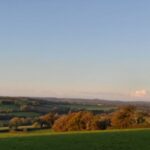
Taylor’s Field is quite unassuming: an almost perfect rectangle, fairly flat, no large humps and bumps to make it interesting. It has the advantage of good road frontage. No signs remain of the stone cottage that was there just over a century ago, the stones used by my great-grandfather for some project or other. At one end is a small copse of trees where I used to play. The trees created a perfect leafy glade where I could pretend I was camping on my adventures inspired by the Famous Five.
Taylor’s Field is named for the family who once lived there – a Joseph Taylor and his brothers. The field has some notoriety as one of the Taylors was hanged as a convicted murderer in 1903. The murder didn’t happen in this field, but one of the two persons found guilty was Joseph Taylor. The victim was John Daly who lived in a five-acre field at Clonbrock, about three hundred yards from Taylor’sField, at the other side of the river. John Daly lived in a two-roomed cottage with his wife Mary and their two children aged nine and eleven. They had a vegetable garden, two cows and a mare. He worked as a carter, selling breakage, which was small pieces of coal mixed with ‘culm’ (coal dust). Some time before 1902, when the murder happened, it was reported that his and Mary’s marriage had collapsed and they were sleeping separately.
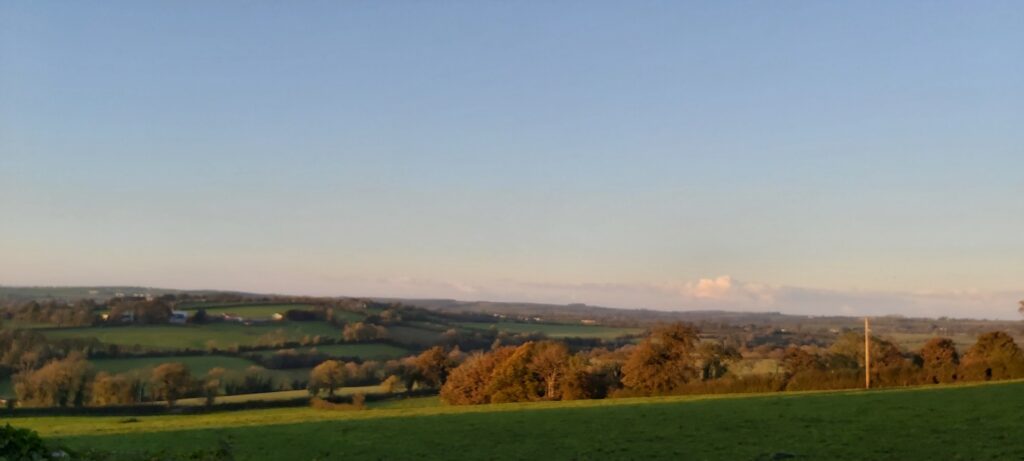
Taylor’s Field is just past that copse of trees
Meanwhile, Joseph Taylor was having an affair with Mary. Ten years younger than her, he had worked as a miner and a carter in the past and was employed as a farm labourer in 1902. He drank heavily and was alleged to have hit Mary on at least one occasion.
John Daly was killed late one night and was found the next morning with wounds to his head. It seemed he was hit and stabbed with a pitchfork. Initially it was believed that Joseph Taylor was the murderer, but he claimed Mary herself had given him carbolic acid to murder her husband. The fact that her children gave conflicting evidence and that she didn’t send for the police on discovering her husband’s body meant her defence was weak. Her trial lasted a mere two days. The jury for Joseph Taylor took only fifty minutes to reach their decision and the jury for Mary took fifty-five minutes.
Mary Daly and Joseph Taylor were sentenced to death by hanging. He was hanged on 7 January 1903 in Kilkenny and she was hanged on 10 January 1903 in Tullamore. The case – known as the ‘Clonbrock Murder’ – received much media attention at the time, reported in local and national papers. Some reports argued that Mary Daly was unfairly treated by British law as four other women (all British) were found guilty of murder around this time and had their sentences commuted to twenty years’ imprisonment. It was argued that Mary received the death penalty because she was Irish and Roman Catholic. Her remains were buried three times: the first in the corner of the prison yard, then they were moved to a pauper’s graveyard in 1937 when the Tullamore gaol was sold, and finally brought back by her brothers to her home in Co. Laois. The murder case is discussed in more detail on the Offaly history blog.
If only fields could talk – we might know if both, or one, was guilty. It might make an interesting historical novel someday but if one was to just glance quickly at this field, it’s one of our most unassuming, not as wet as its neighbouring field The Bog but not our best field either.
Till the Cows Come Home
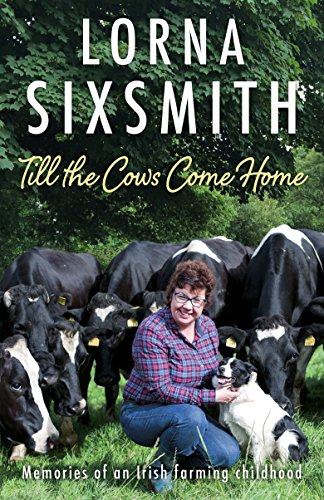 There are more stories of our fields in my memoir Till the Cows Come Home which was published in 2018. I’m very grateful to the farmers, authors, bloggers and reviewers who provided reviews. Here’s one from Clare at The TBR Pile, a book reviewer who also happens to be vegetarian / almost vegan:
There are more stories of our fields in my memoir Till the Cows Come Home which was published in 2018. I’m very grateful to the farmers, authors, bloggers and reviewers who provided reviews. Here’s one from Clare at The TBR Pile, a book reviewer who also happens to be vegetarian / almost vegan:
“Would I recommend this book? I would wholeheartedly. It is an enjoyable and accessible read; informative without lecturing; relatable and entertaining; nostalgic but pragmatic; amusing and down-to-earth. It is part memoir, part social history, and part meet-your-food-producer. Farmers will nod their heads in agreement, rural dwellers will recognise their neighbours, and if all you’ve known is towns, then this delightful book will show you how your country cousins live.”
If you would like to read Till the Cows Come Home, it is available as an ebook and a beautiful hardback (I am so pleased with its production values, okay, apart from my mug on the front, but the quality of the paper is superb, it includes pages of photographs and even has a cowprint on the interior of the cover). Buy it from Amazon, directly from the publisher Black and White Publishing or bookshops.






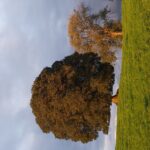
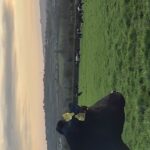
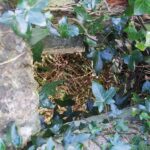
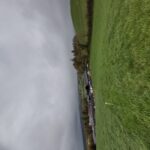
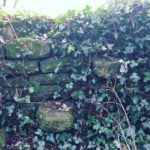
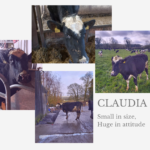
Noeleen Dunne
Lorna …….just read your article on Mary Daly my gran aunt just discovered this awful tragedy 30 yrs ago . A well know criminologist contacted me as he was writing a book and wanted our daughter to make a sketch but we didn’t think it was fitting. When I first started out trying to get more info a friend who’s Mam lived in Edenderry and she remembered when her body was removed from grave she was identified by the boots she was wearing she was then buried in Killeagh cemetery until my grandfather and his brother brought her to their family plot but to this day her name is not on the headstone. I visited the PP in Tolerton where we went through the Marriage registration but we found no cert .Every year I google to see is there any new info on this tragedy and I read in the Offaly news where there was a phone call made the night before from London to say the were never married no surprise there with British justice. I believe from a reliable source that the ghost of a woman is often seen on that site and the call her Mary that is why on the 10th of Jan I always have a mass said for their souls and the baby she was carrying. May the rest in peace.
Ann Talbot
Sad story … well told!
Lorna Post author
Thanks Ann, I’m thinking it might make a good historical novel some day
Catherine
Great story Lorna!
Lorna Post author
Thank you 🙂
BUY THE BOOKS NOW
Subscribe to My Blog Posts
Subscribe to My Newsletter
Recent Posts
Archives
Categories